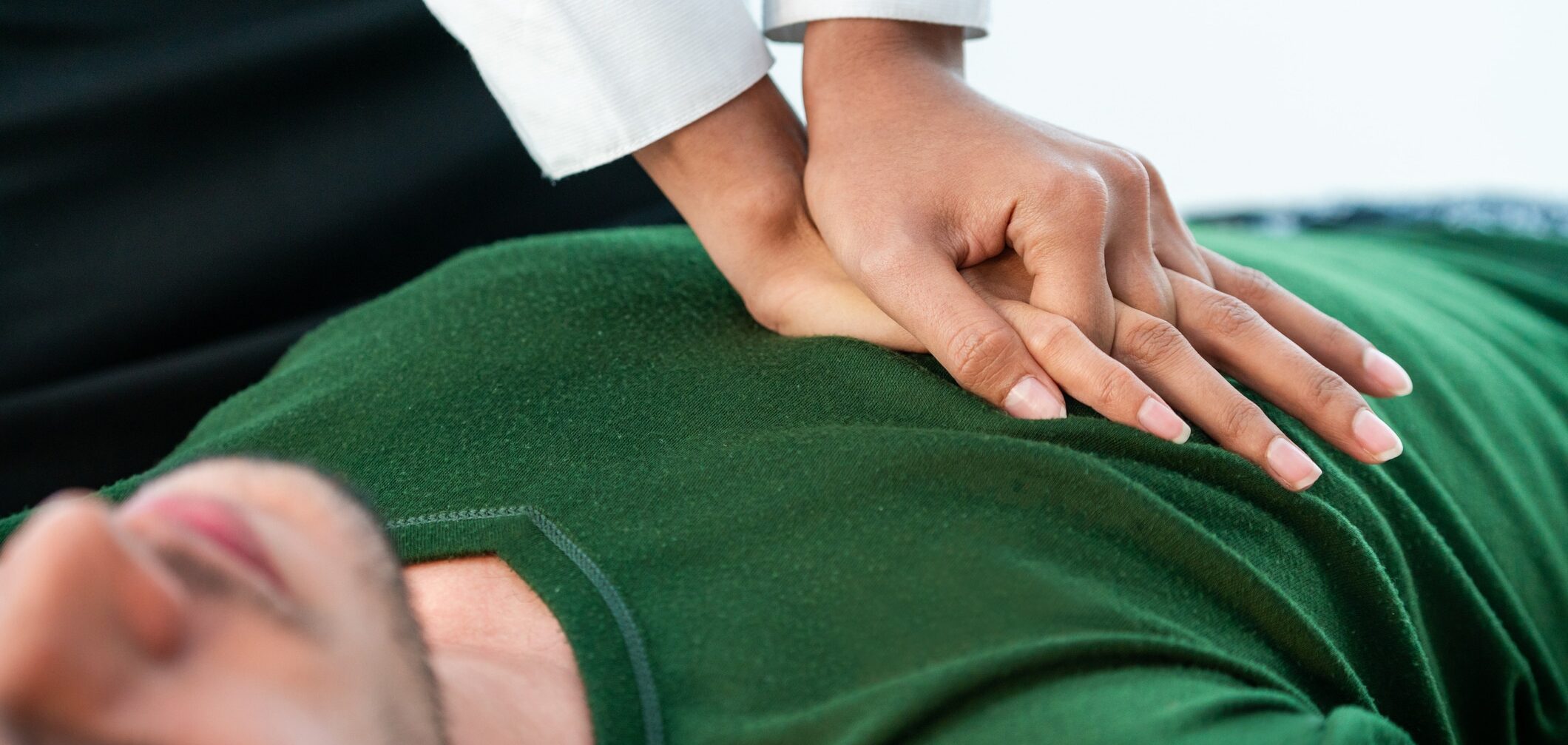
CPR stands for cardiopulmonary resuscitation, and it is an emergency technique used to help people whose hearts have stopped beating or have a blocked airway. When someone experiences cardiac arrest, or a heart attack, blood stops flowing to the heart, causing the heart to stop beating. Simply, an “electrical problem” has occurred to prevent the heart from functioning normally. CPR increases the chance of survival after the heart stops beating. The more immediate CPR is administered the likelihood of resuscitation can triple until trained medical services can be given.
Before Administering CPR
- Observe the scene and ensure it is safe to approach. As you approach, touch the person on the shoulder.
- Ask the person “Are you OK?” loud and clear.
- Call or have a bystander call 911.
- If an automated external defibrillator (AED) is available, have someone get it. AED is a lightweight, portable device that gives an electric shock to the heart the chest.
If no one else is around, stay with the victim and provide assistance while calling 911
- Have the victim lay on their back with their head slightly tilted back.
- Check their breathing. Use no longer than 10 seconds to hear for sounds of breathing.
Once you have determined whether or not the person is able to breathe or the heart is beating, you have a choice to administer CPR.
CPR Steps
If you are untrained:
- Use Hands-Only CPR (CPR without mouth-mouth).
- Place your hands on top of each other in the middle of the chest, interlacing fingertips.
- Use two fingers at the sternum (where lower ribs meet) and place the bottom portion of your hand where your fingers are to properly locate your hands.
- If you are administering CPR to an infant, place two fingers at the center of its chest and deliver 30 quick compressions that are one and a half inches deep into their chest.
- Use your weight to push hard and fast to compress their chest.
- Each compression should be at least 2 inches deep at a rate of 100 per minute
- Counting aloud can help or use the beat to the song “Stayin’ Alive” by the Bee Gees.
- If you are trained/certified, follow the steps above in addition to:
- Each compression should be at least 2 inches deep at a rate of 100 per minute
- Lifting the victim’s chin to open their airways
- Conduct either mouth-to-mouth or mouth-to-nose breathing if the mouth can not be opened
- Pinch the nose and cover the mouth as you blow to make their chest rise.
- Give two breaths each lasting a second.
- Continue these steps until the victim shows signs of life or a medically trained provider arrives
Hands-Only CPR can be learned in less than two minutes and can mean a lifetime for someone else. Learn more at UofLHealth.org/RCT.
More resources are available from the American Heart Association.








